Influencia en la producción animal actual de las creencias de los consumidores y ciudadanos sobre el bienestar animal
En la actual situación socioeconómica la preocupación de los consumidores y ciudadanos por el bienestar de los animales de producción puede suponer un veto para algunos productos poniendo en riesgo la sostenibilidad de los sistemas intensivos. Existen distintos tipos de definiciones sobre el concepto de bienestar dependiendo de qué aspectos se consideren más relevantes para el animal. La ausencia de una definición de bienestar animal globalmente aceptada aumenta la confusión de la sociedad. Se constata la existencia un bajo nivel de conocimiento sobre los actuales modos de producción y las implicaciones sobre el bienestar de los animales motivado, entre otras causas, por el distanciamiento físico y mental entre productores y consumidores. Estos creen que las especies mantenidas en sistemas productivos intensivos como los pollos de engorde, gallinas ponedoras y los cerdos están en peores condiciones de bienestar. Existen diferencias también en cuanto a la voluntariedad para pagar un precio superior por los productos que provienen de animales con mayor bienestar, siendo el ganado vacuno el mejor considerado. Los consumidores suelen percibir los productos provenientes de animales con mayor bienestar como más saludables, higiénicos, seguros, sabrosos, auténticos, tradicionales y mejores para el medio ambiente. Por todo ello, los ganaderos, las empresas y los miembros de la cadena alimentaria deben mantenerse al tanto de las percepciones públicas y la evolución de las preocupaciones y actitudes de los consumidores para poder tomar decisiones informadas que les ayuden a mejorar su sostenibilidad, responsabilidad social y credibilidad pública, lo cual les permitirá mantener su licencia social a través de la aprobación ética social.
Palabras clave: bienestar, consumidores, percepciones, producción animal.
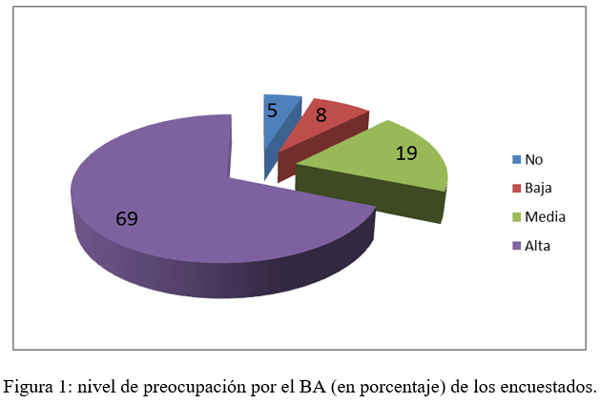
- Libres de hambre y sed: ingiriendo dietas capaces de mantener un estado de salud adecuado.
- Libres de incomodidad: viviendo en un ambiente que proporcione protección y áreas de descanso cómodas.
- Libres de dolor, heridas y enfermedad: mediante la prevención, diagnóstico y tratamientos oportunos de los procesos patológicos.
- Libres para poder expresar su comportamiento normal: disponiendo de espacio suficiente, infraestructuras adecuadas y compañía de animales de su misma especie.
- Libres de miedo y de estrés: manteniéndose en condiciones que eviten el sufrimiento psicológico.
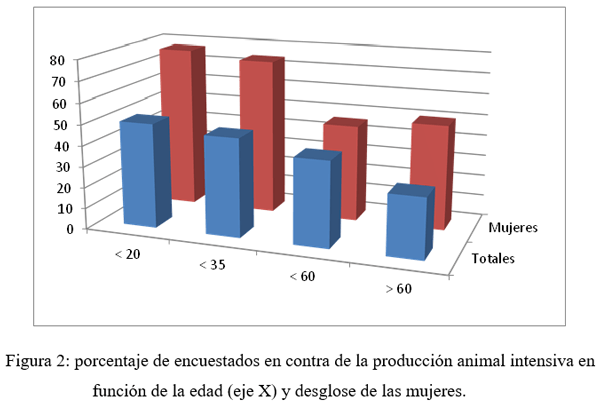
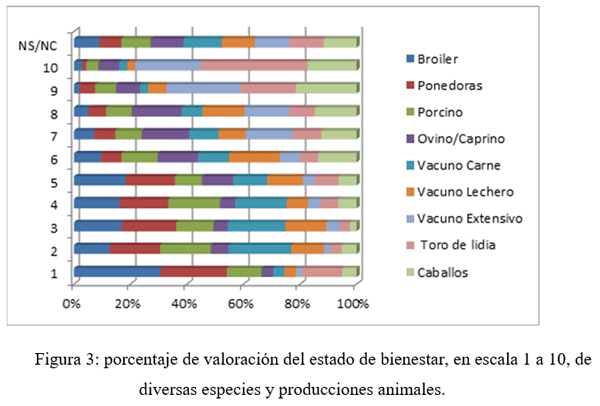
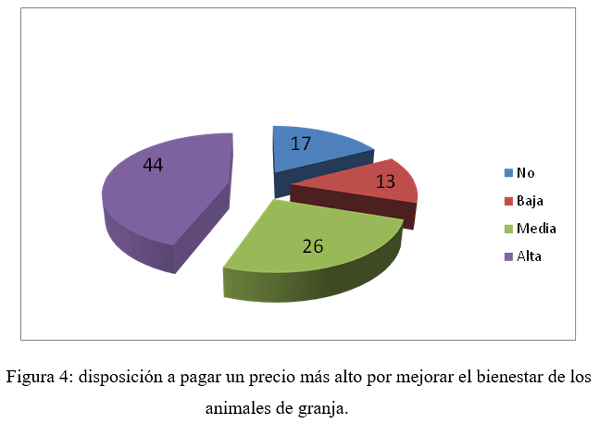
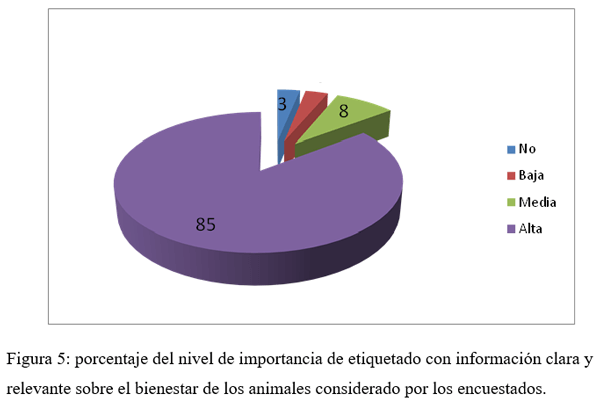
Abidoye, B. O., Bulut, H., Lawrence, J., Mennecke, B., & Townsend, A. M. (2011). US consumers’ valuation of quality attributes in beef products. Journal of Agricultural and Applied Economics, 43(1), 1-12.
Allievi, F., Vinnari, M., & Luukkanen, J. (2015). Meat consumption and production - analysis of efficiency, sufficiency and consistency of global trends. Journal of Cleaner Production, 92, 142-151. https://doi.org/10.1016/j.jclepro.2014.12.075.
Alonso, M. E. & Lomillos, J. M. (2019). Herramientas para ganaderos y veterinarios para mejorar y demostrar el bienestar de sus animales. Ponencia En: Procedings del XXIV Congresod Internacional ANEMBE de Medicina Bovina, Sevilla, 22-24 mayo. Pp. 176-181.
Appleby, M. C. (1999). What should we do about animal welfare? Blackwell Science: Oxford, UK.
Bejaei, M., Wiseman, K., & Cheng, K. M. (2011). Influences of demographic characteristics, attitudes, and preferences of consumers on table egg consumption in British Columbia, Canada. Poultry Science, 90(5), 1088-1095. https://doi.org/10.3382/ps.2010-01129.
Bennett, R., Kehlbacher, A., & Balcombe, K. (2012). A method for the economic valuation of animal welfare benefits using a single welfare score. Animal Welfare, 21, 125-130. https://doi.org/10.7120/096272812x13345905674006.
Blokhuis, H. J., Keeling, L. J., Gavinelli, A., & Serratosa, J. (2008). Animal welfare's impact on the food chain. Trends in Food Science & Technology, 19, S79-S87. https://doi.org/https://doi.org/10.1016/j.tifs.2008.09.007.
Boogaard, B. K., Oosting, S. J., & Bock, B. B. (2006). Elements of societal perception of farm animal welfare: A quantitative study in The Netherlands. Livestock Science, 104(1-2), 13-22. https://doi.org/10.1016/j.livsci.2006.02.010.
Bracke, M. B. M., Spruijt, B. M., & Metz, J. H. M. (1999). Overall animal welfare assessment reviewed. Part 1: Is it possible? Netherlands Journal of Agricultural Science, 47(3-4), 279-291.
Brom, F. W. A. (2000). Food, consumer concerns, and trust: Food ethics for a globalizing market. Journal of Agricultural & Environmental Ethics, 12(2), 127-139. https://doi.org/10.1023/a:1009586529518.
Broom, D. M. (1986). Indicators of poor welfare. British Veterinary Journal, 142(6), 524-526. https://doi.org/10.1016/0007-1935(86)90109-0.
Broom, D. M. (2007). Introducción. In M. D. Broom & G. R. Gil (Eds.), Bienestar Animal (pp. 1-5). Zaragoza, España: Acribia.
Broom, D. M. (2017). Animal welfare in the European Union. European Parliament: Brussels, Belgium, 75.
Broom, D. M. (2019). Land and water usage in beef production systems. Animals, 9(6), 286; 281-213. https://doi.org/10.3390/ani9060286.
Buller, H., Blokhuis, H., Jensen, P., & Keeling, L. (2018). Towards Farm Animal Welfare and Sustainability. Animals, 8(6). https://doi.org/10.3390/ani8060081.
Buller, H., & Cesar, C. (2007). Eating well, eating fare: farm animal welfare in France. International Journal of Sociology of Food and Agriculture, 15(3), 45-58.
Buller, H., & Morris, C. (2003). Farm animal welfare: A new repertoire of nature-society relations or modernism re-embedded? Sociologia Ruralis, 43(3), 216-+. https://doi.org/10.1111/1467-9523.00242.
Cardoso, C. S., Hoetzel, M. J., Weary, D. M., Robbins, J. A., & von Keyserlingk, M. A. G. (2016). Imagining the ideal dairy farm. Journal of Dairy Science, 99(2), 1663-1671. https://doi.org/10.3168/jds.2015-9925.
Clark, B., Stewart, G. B., Panzone, L. A., Kyriazakis, I., & Frewer, L. J. (2016). A systematic review of public attitudes, perceptions and behaviours towards production diseases associated with farm animal welfare. Journal of Agricultural & Environmental Ethics, 29(3), 455-478. https://doi.org/10.1007/s10806-016-9615-x.
Clark, B., Stewart, G. B., Panzone, L. A., Kyriazakis, I., & Frewer, L. J. (2017). Citizens, consumers and farm animal welfare: A meta-analysis of willingness-to-pay studies. Food Policy, 68, 112-127. https://doi.org/10.1016/j.foodpol.2017.01.006.
Cornish, A., Raubenheimer, D., & McGreevy, P. (2016). What we know about the public's level of concern for farm animal welfare in food production in developed countries. Animals, 6(11), 74, 71-15. https://doi.org/10.3390/ani6110074.
Dawkins, M. S. (1988). Behavioral deprivation: A central problem in animal welfare. Applied Animal Behaviour Science, 20(3-4), 209-225. https://doi.org/10.1016/0168-1591(88)90047-0.
de Graaf, S., Van Loo, E. J., Bijttebier, J., Vanhonacker, F., Lauwers, L., Tuyttens, F. A. M., & Verbeke, W. (2016). Determinants of consumer intention to purchase animal-friendly milk. Journal of Dairy Science, 99(10), 8304-8313. https://doi.org/10.3168/jds.2016-10886.
de Jonge, J., & van Trijp, H. C. M. (2013). Meeting heterogeneity in consumer demand for animal welfare: A reflection on existing knowledge and implications for the meat sector. Journal of Agricultural & Environmental Ethics, 26(3), 629-661. https://doi.org/10.1007/s10806-012-9426-7.
Duncan, I. J. H., & Petherick, J. C. (1991). The implications of cognitive processes for animal welfare. Journal of Animal Science, 69(12), 5017-5022.
Ellis, K. A., Billington, K., McNeil, B., & McKeegan, D. E. F. (2009). Public opinion on UK milk marketing and dairy cow welfare. Animal Welfare, 18(3), 267-283.
Eurobarómetro. (2007). Attitudes of EU citizens towards animal welfare. Report. Special Eurobarometer 270 (p. 82). Brussels, Belgium: European Commission.
Eurobarómetro. (2016). Attitudes of Europeans towards animal welfare. Report. Special Eurobarometer 442 (p. 84). Brussels, Belgium: European Commission.
FAO. (2019). Animal production. FAO's role in animal production. 17, January, 2020 2020.
Fraser, A. F., & Broom, D. M. (1990). Farm animal behaviour and welfare. London, England: England: Bailliere Tindall.
Fraser, D. (2003). Assessing animal welfare at the farm and group level: The interplay of science and values. Animal Welfare, 12(4), 433-443.
Grandin, T. (2014). Animal welfare and society concerns finding the missing link. Meat Science, 98(3), 461-469. https://doi.org/10.1016/j.meatsci.2014.05.011.
Green, T. C., & Mellor, D. J. (2011). Extending ideas about animal welfare assessment to include 'quality of life' and related concepts. New Zealand Veterinary Journal, 59(6), 263-271. https://doi.org/10.1080/00480169.2011.610283.
Grigg, D. (1995). The pattern of world protein consumption. Geoforum, 26(1), 1-17. https://doi.org/10.1016/0016-7185(94)00020-8.
Grunert, K. G. (2006). Future trends and consumer lifestyles with regard to meat consumption. Meat Science, 74(1), 149-160. https://doi.org/10.1016/j.meatsci.2006.04.016.
Grunert, K. G., Sonntag, W. I., Glanz-Chanos, V., & Forum, S. (2018). Consumer interest in environmental impact, safety, health and animal welfare aspects of modern pig production: Results of a cross-national choice experiment. Meat Science, 137, 123-129. https://doi.org/10.1016/j.meatsci.2017.11.022.
Harper, G., & Henson, S. (2001). Consumer concerns about animal welfare and the impact on food choice. EU FAIR CT98-3678, Centre for Food Economics Research, The University of Reading.
Harvey, D., & Hubbard, C. (2013). Reconsidering the political economy of farm animal welfare: An anatomy of market failure. Food Policy, 38, 105-114. https://doi.org/10.1016/j.foodpol.2012.11.006.
Jensen, H. H. (2006). Consumer issues and demand. The magazine of food, farm, and resource issues. Choices, 21(3), 165-169.
Kendall, H. A., Lobao, L. M., & Sharp, J. S. (2006). Public concern with animal well-being: Place, social structural location, and individual experience. Rural Sociology, 71(3), 399-428. https://doi.org/10.1526/003601106778070617.
Kupsala, S., Vinnari, M., Jokinen, P., & Rasanen, P. (2015). Citizen attitudes to farm animals in Finland: A population-based study. Journal of Agricultural & Environmental Ethics, 28(4), 601-620. https://doi.org/10.1007/s10806-015-9545-z.
Lagerkvist, C. J., & Hess, S. (2011). A meta-analysis of consumer willingness to pay for farm animal welfare. European Review of Agricultural Economics, 38(1), 55-78. https://doi.org/10.1093/erae/jbq043.
Lassen, J., Sandoe, P., & Forkman, B. (2006). Happy pigs are dirty! Conflicting perspectives on animal welfare. Livestock Science, 103(3), 221-230. https://doi.org/10.1016/j.livsci.2006.05.008. Livest Sci
Lorz, A. (1973). Tierschutzgesetz. Verlag Beck, Munich.
Malek, L., Umberger, W. J., & Rolfe, J. (2018). Segmentation of Australian meat consumers on the basis of attitudes regarding farm animal welfare and the environmental impact of meat production. Animal Production Science, 58(3), 424-434. https://doi.org/10.1071/an17058.
Maria, G. A. (2006). Public perception of farm animal welfare in Spain. Livestock Science, 103(3), 250-256. https://doi.org/10.1016/j.livsci.2006.05.011.
Mayfield, L. E., Bennett, R. M., Tranter, R. B., & Wooldridge, M. J. (2007). Consumption of welfare-friendly food products in Great Britain, Italy and Sweden, and how it may be influenced by consumer attitudes to, and behaviour towards, animal welfare attributes. International Journal of Sociology of Food and Agriculture, 15(3), 59-73.
McEachern, M. G., Schröder, M. J. A., Willock, J., Whitelock, J., & Mason, R. (2007). Exploring ethical brand extensions and consumer buying behaviour: The RSPCA and the "Freedom Food" brand. Journal of Product and Brand Management, 16(3), 168-177. https://doi.org/10.1108/10610420710751546.
McEachern, M. G., & Willock, J. (2004). Producers and consumers of organic meat: A focus on attitudes and motivations. British Food Journal, 106(7), 534-552. https://doi.org/10.1108/00070700410545737.
McKendree, M. G. S., Croney, C. C., & Widmar, N. J. O. (2014). Effects of demographic factors and information sources on United States consumer perceptions of animal welfare. Journal of Animal Science, 92(7), 3161-3173. https://doi.org/10.2527/jas.2014-6874.
Mellor, D. J. (2016). Updating animal welfare thinking: Moving beyond the "Five Freedoms" towards "A Life Worth Living". Animals, 6(21), 1-20. https://doi.org/10.3390/ani6030021.
Miele, M. (2010). Report concerning consumer perceptions and attitudes towards farm animal welfare. European Animal Welfare Platform: Brussels, Belgium, 1-16.
Miele, M., & Evans, A. (2010). When foods become animals: Ruminations on ethics and responsibility in care-full practices of consumption. Ethics, Place & Environment, 13(2), 171-190. https://doi.org/10.1080/13668791003778842.
Miranda-de la Lama, G. C., Estevez-Moreno, L. X., Sepulveda, W. S., Estrada-Chavero, M. C., Rayas-Amor, A. A., Villarroel, M., & Maria, G. A. (2017). Mexican consumers' perceptions and attitudes towards farm animal welfare and willingness to pay for welfare friendly meat products. Meat Science, 125, 106-113. https://doi.org/10.1016/j.meatsci.2016.12.001.
Prickett, R. W., Norwood, F. B., & Lusk, J. L. (2010). Consumer preferences for farm animal welfare: results from a telephone survey of US households. Animal Welfare, 19(3), 335-347. Anim Welfare
Regan, T. (1985). The case for animal rights. In P. Singer (Ed.), Defense of Animals (pp. 13-26). New York: Basil Blackwell.
Sandøe, P. (1996). Animal and human welfare. Are they the same kind of thing? Acta Agriculturae Scandinavica Section a-Animal Science, 11-15.
Santurtun-Oliveros , E., Tapia-Perez, G., Gonzalez-Rebeles, C., & Galindo-Maldonado, F. (2012). Consumer attitudes and perceptions towards sustainable animal production attributes in Mexico City. Veterinaria Mexico, 43(2), 87-101.
Schnettler, B., Vidal, R., Silva, R., Vallejos, L., & Sepulveda, N. (2008). Consumer perception of animal welfare and livestock production in the Araucania Region, Chile. Chilean Journal of Agricultural Research, 68(1), 80-93.
Schröder, M. J. A., & McEachern, M. G. (2004). Consumer value conflicts surrounding ethical food purchase decisions: A focus on animal welfare. International Journal of Consumer Studies, 28(2), 168-177. https://doi.org/10.1111/j.1470-6431.2003.00357.x.
Singer, P. (1975). Animal Liberation: A New Ethics for Our Treatment of Animals. 1990 ed. London: Random House Pimlico.
Spooner, J. M., Schuppli, C. A., & Fraser, D. (2014). Attitudes of Canadian citizens toward farm animal welfare: A qualitative study. Livestock Science, 163, 150-158. https://doi.org/10.1016/j.livsci.2014.02.011.
Su, B., & Martens, P. (2017). Public attitudes toward animals and the influential factors in contemporary China. Animal Welfare, 26(2), 239-247. https://doi.org/10.7120/09627286.26.2.239.
Sumner, L. W. (1996). Welfare, happiness, and ethics: Clarendon Press.
Te-Velde, H., Aarts, N., & Van Woerkum, C. (2002). Dealing with ambivalence: Farmers' and consumers' perceptions of animal welfare in livestock breeding. Journal of Agricultural & Environmental Ethics, 15(2), 203-219.
Vanhonacker, F., Verbeke, W., Van Poucke, E., & Tuyttens, F. (2007). Segmentation based on consumers’ perceived importance and attitude toward farm animal welfare. International Journal of Sociology of Agriculture and Food, 15(3), 91-107.
Vanhonacker, F., & Verbeke, W. (2009). Buying higher welfare poultry products? Profiling Flemish consumers who do and do not. Poultry Science, 88(12), 2702-2711. https://doi.org/10.3382/ps.2009-00259.
Vapnek, J., & Chapman, M. S. (2010). Legislative and regulatory options for animal welfare. FAO legislative study(104).
Vargas-Bello-Perez, E., Riveros, J. L., Kobrich, C., Alvarez-Melo, P. A., & Lensink, J. (2017). Chilean consumers' perception about animal welfare in dairy production systems: short communication. Animal Production Science, 57(1), 147-151. https://doi.org/10.1071/an14968.
Verbeke, W., & Viaene, J. (1999). Beliefs, attitude and behaviour towards fresh meat consumption in Belgium: empirical evidence from a consumer survey. Food Quality and Preference, 10(6), 437-445. https://doi.org/10.1016/s0950-3293(99)00031-2.
Wolf, C. A., Tonsor, G. T., McKendree, M. G. S., Thomson, D. U., & Swanson, J. C. (2016). Public and farmer perceptions of dairy cattle welfare in the United States. Journal of Dairy Science, 99(7), 5892-5903. https://doi.org/10.3168/jds.2015-10619.








